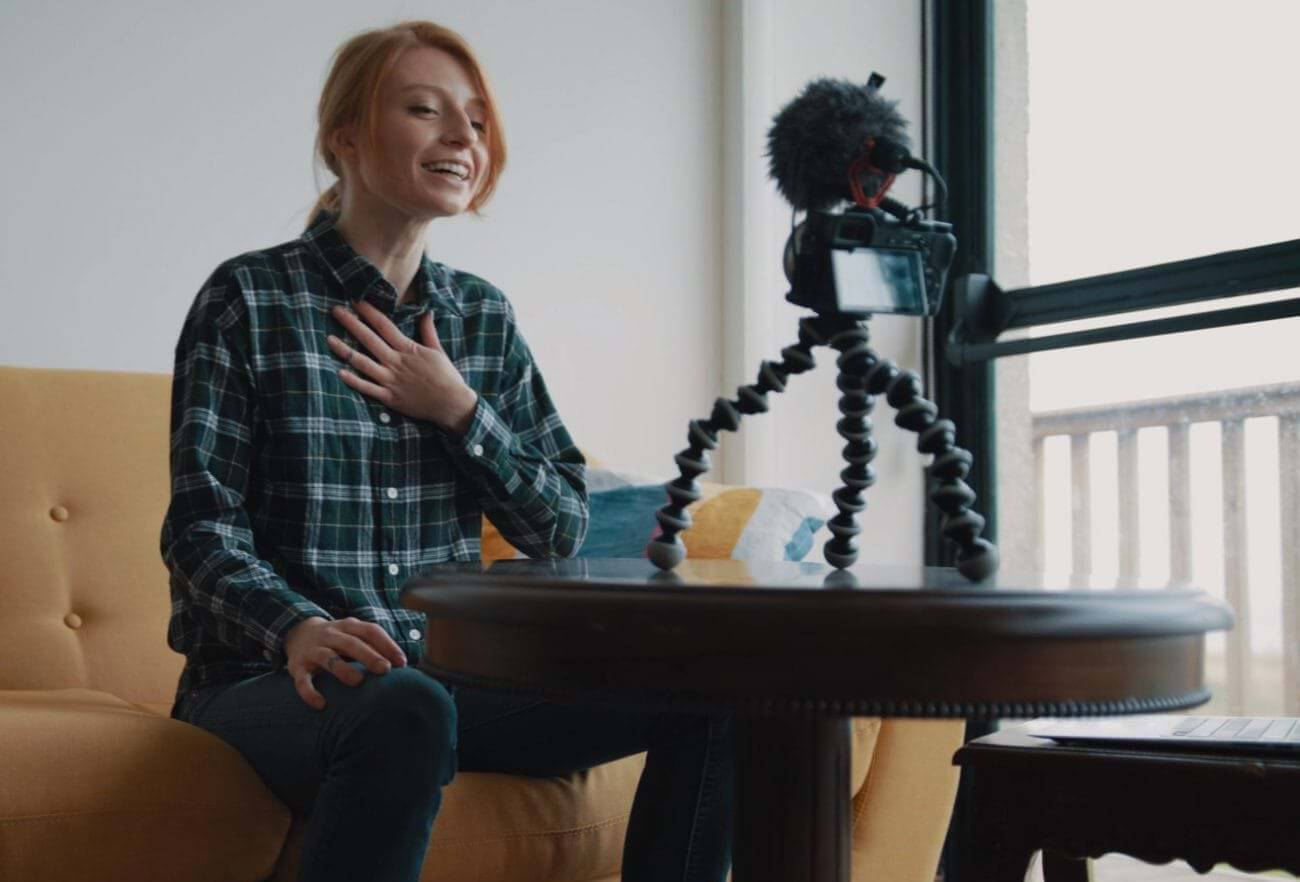Highlights
Table of Contents
Explore article topics
Think YouTube videos aren’t scripted? Think again! To create engaging videos, you need more than the right YouTube equipment, music and high-quality cinematography. A well-crafted and well-executed script can make or break your YouTube video in terms of exposure and engagement.
Goals
Your first step to become a YouTuber is to define your goal. You should be able to write the goal of your video in a single sentence. Is it to promote your skills, business, or talent? Is it to engage with your current audience or to attract new viewers or clients? Do you want to monetize the actual video through ads? Is your goal to entertain and get new subscribers?
Once you define your goal(s), spend time on research. Which YouTube videos do best what you want to do? Study their elements. You may even find a sample or template script that you can adapt for your video. Be sure not to copy or steal content, but definitely find inspiration from others. That’s the beauty of the world wide web!
Audience
Your audience matters and you need to understand them — their goals, desires, questions, and taste. Having a clear demographic will help you decide the tone, strategy, delivery, content, and call-to-action. Who you are talking to determines how you speak to them. Is your audience interest in your expertise? What valuable information can you deliver to solve a problem relevant to them? People watch explainer videos to find out how you can help them. Be specific and cut to the chase quick. Always remember who you’re talking to — their age, interests, locations, primary language, education level, even gender.

Pay attention to previous comments and suggestions from your audience. What do they want more from you? What do they like and dislike? Study your most popular content and most active followers to craft your next video.
If your goal is to speak to a brand new audience, you’ll need to establish your authority early on. This is your opportunity to brag about yourself! Highlight your experience, skills, work, and client list at the top of the video or direct your audience to your portfolio, reel, or another video that tells them who you are and why you are an authority on the subject.
Tone
Tone is everything. Will you be serious, comedic, experimental, professional or whacky? Your tone depends on your goals and audience. Maintain a consistent tone to keep your audience engaged from beginning to end. Ask yourself what emotional reaction you want your audience to have and adjust the tone of your YouTube video script accordingly. Your decided tone will be a factor in the narration, music and imagery you use.
If you deliver lots of information verbally, be sure to be conversational but informative. If comedy is your delivery vehicle, test your jokes on an audience first! The tone should be in line with your previous (and future work) to establish a clear brand style.
Strategy
You’ll need a strategy to execute your vision. Is your goal to keep the audience engaged through visuals? If so, you’ll want to spend the majority of your time on storyboarding and executing high-quality cinematography, graphics and editing. For explainer videos, you may want to hire a motion graphics artist to create slick and relevant animation. If you’re looking to improve your filmmaking skills, check out our 14 days of film school.
Do you want to emotionally touch your audience? Then talk to them, not at them. Make it personal. Use personal anecdotes or stories. Be vulnerable and real.
Is your goal to impress upon your audience your professionalism and expertise? Then you can be more formal, but still entertaining.
Where does storytelling fit in? Can you incorporate a character to guide your audience through a question and answer? Keep your focus clear and avoid using too many characters or storylines. Always remember your theme and call to action.
Delivery
How will the content be delivered? What is the best structure and length? For example, if you’re writing an explainer video, you may want to break it up into parts to whet your audience’s appetite and keep them coming back for more. Can you call on an expert to speak in your video? Using talking heads and interviews with a strong b-roll to back it up can all be scripted. Make sure to guide your interviewee to deliver sound bites that reinforce the theme of your video and your final call to action.

Will you be a talking head or use voiceover? Then you may want to write in lines to be delivered via a teleprompter (which can be a phone, computer, or iPad). Even if the script isn’t followed precisely, your host should have beats to hit the main points of the video theme. Bullet points may be more effective than a script reading for some. Do an off-camera read of the script before you begin shooting.
Content/Message
Be sure to be clear and concise from the beginning. The first 10 seconds of your video are the most important. The first 1-2 sentences are key. This is where scripting is so valuable. Continue to hammer home your focused message throughout the video. Think of your YouTube video script as a three-act play: the intro, body, and conclusion are all separate but integral parts. Weave your theme clearly throughout each.
Be sure to read all the speaking parts out loud. Trim for conciseness as well as the total length of the video. All the hosted elements and dialogue should be natural, so consider reading it aloud to friends, family or colleagues and get feedback.
You will also want to fact check any data you share and possibly share links in the description.
Power your business's creativity with Artlist Business
Call to Action
What do you want your audience to do with the information you give them? Do you want them to click, buy or comment? Then tell them and do so in each act. A clear call-to-action at the conclusion is indispensable. Your call-to-action can be a command or a question. If you’re using a question to encourage commenting, make it personal or controversial. Craft it to get more than a yes or no answer.
Be sure to tease your audience with future content and titles. Direct them to your website, social pages and to subscribe to your channel.
Formatting the Script
Okay, so you’ve decided the goals, audience, strategy, tone, delivery, and content — now to write the script. You may want to start with an outline, then move into writing a more detailed script.
The script should contain the voiceover/dialogue as well as the visual and audio elements of your video. Think of it as a set of directions to your cinematographer, host/talent and editor. Employ a simple two-column format that shows the audio and video of each frame/scene. Here’s a sample script.
You’ll want to write in any visual aids such as animation, titles, and calls to action. You might even include notes to the editor in your YouTube video script.
SEO
SEO or Search Engine Optimization is key in getting your video before your audience. Google needs to know clearly what your video is about and you need to help your audience find it. You want your title, description, and links to show up in a Google search, so beyond scripting just the video, you’ll want to script those elements as well as keywords that your audience might search to find information such as that contained in your video.
Unsure of how to find the relevant keywords for your video? Use keyword research platforms like KWFinder and SEMrush or the video-specific VidIQ. These tools can help your video rank higher in search results, increase sales and lead generation and grow your brand’s exposure.
In Conclusion
The time you spend in pre-production writing your YouTube video script can save you time, money, and costly mistakes in production and editing. It can also make for a smoother operation among crew, so happy scriptwriting!
Jessica Peterson is a travel and documentary filmmaker with a background in journalism and marketing. She runs Purple Noon Productions from sunny Los Angeles. She has 20 years of experience producing content in 114 cities and 25 countries. In 2016, she directed and produced her own documentary about her then-home of Guam. Her clients include CNN, United Airlines, Southwest Airlines, Matador Network, and Tastemade.
Share this article
Did you find this article useful?
Related Posts
- By Josh Edwards
- 11 MIN READ
- By Daniela Bowker
- 4 MIN READ
- By Jessica Peterson
- 10 MIN READ
Latest Posts
- 25 Apr
- By Josh Edwards
- 4 MIN READ
